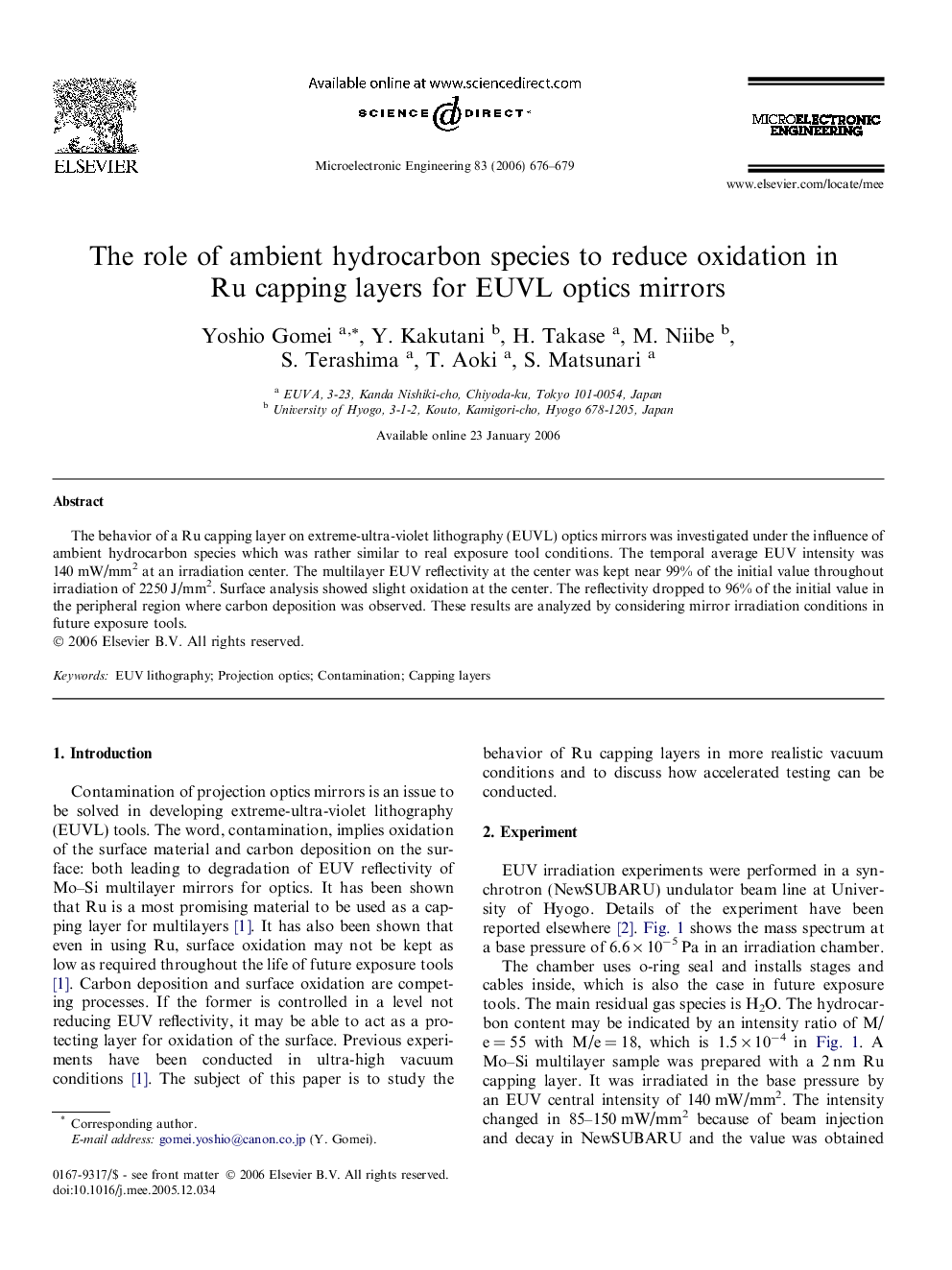| Article ID | Journal | Published Year | Pages | File Type |
|---|---|---|---|---|
| 540886 | Microelectronic Engineering | 2006 | 4 Pages |
Abstract
The behavior of a Ru capping layer on extreme-ultra-violet lithography (EUVL) optics mirrors was investigated under the influence of ambient hydrocarbon species which was rather similar to real exposure tool conditions. The temporal average EUV intensity was 140 mW/mm2 at an irradiation center. The multilayer EUV reflectivity at the center was kept near 99% of the initial value throughout irradiation of 2250 J/mm2. Surface analysis showed slight oxidation at the center. The reflectivity dropped to 96% of the initial value in the peripheral region where carbon deposition was observed. These results are analyzed by considering mirror irradiation conditions in future exposure tools.
Related Topics
Physical Sciences and Engineering
Computer Science
Hardware and Architecture
Authors
Yoshio Gomei, Y. Kakutani, H. Takase, M. Niibe, S. Terashima, T. Aoki, S. Matsunari,
